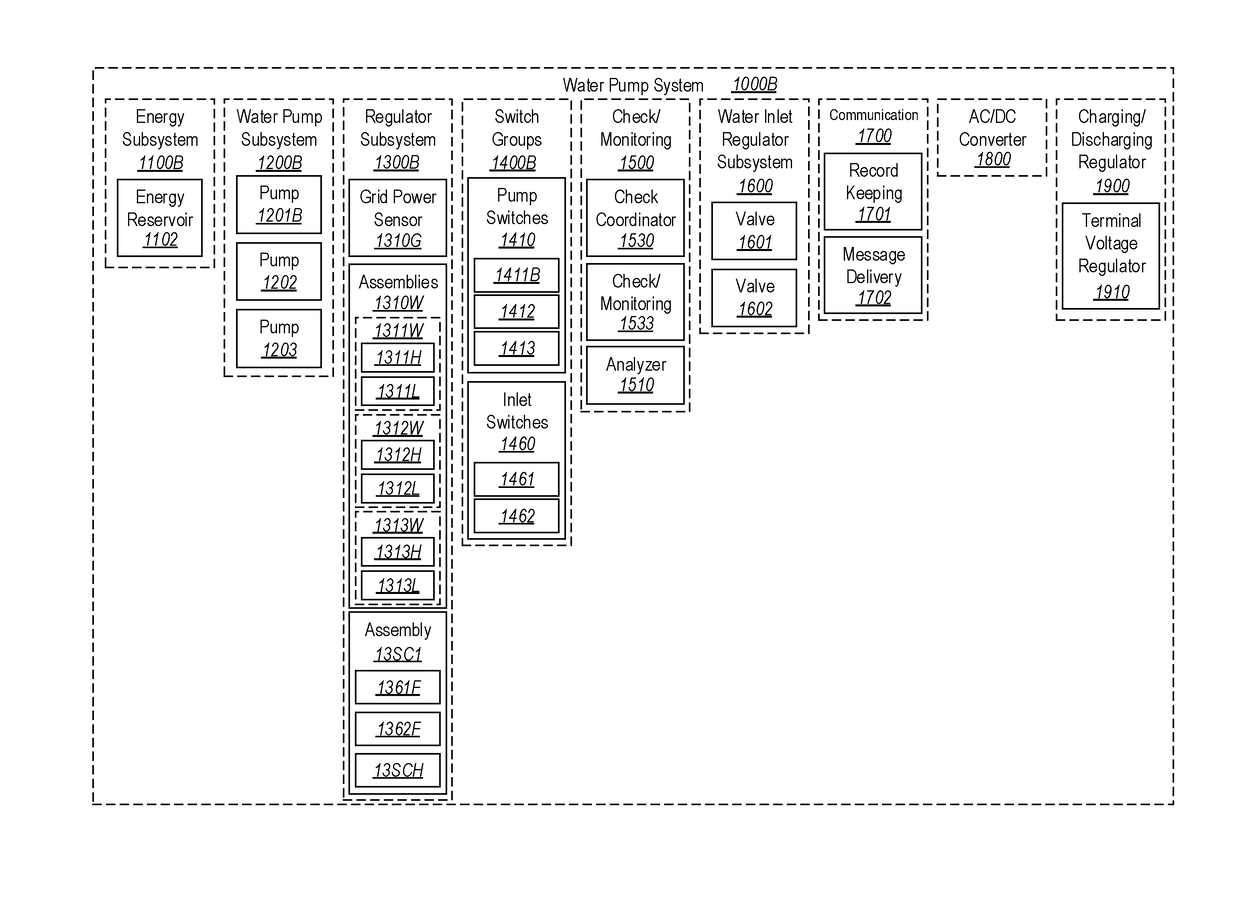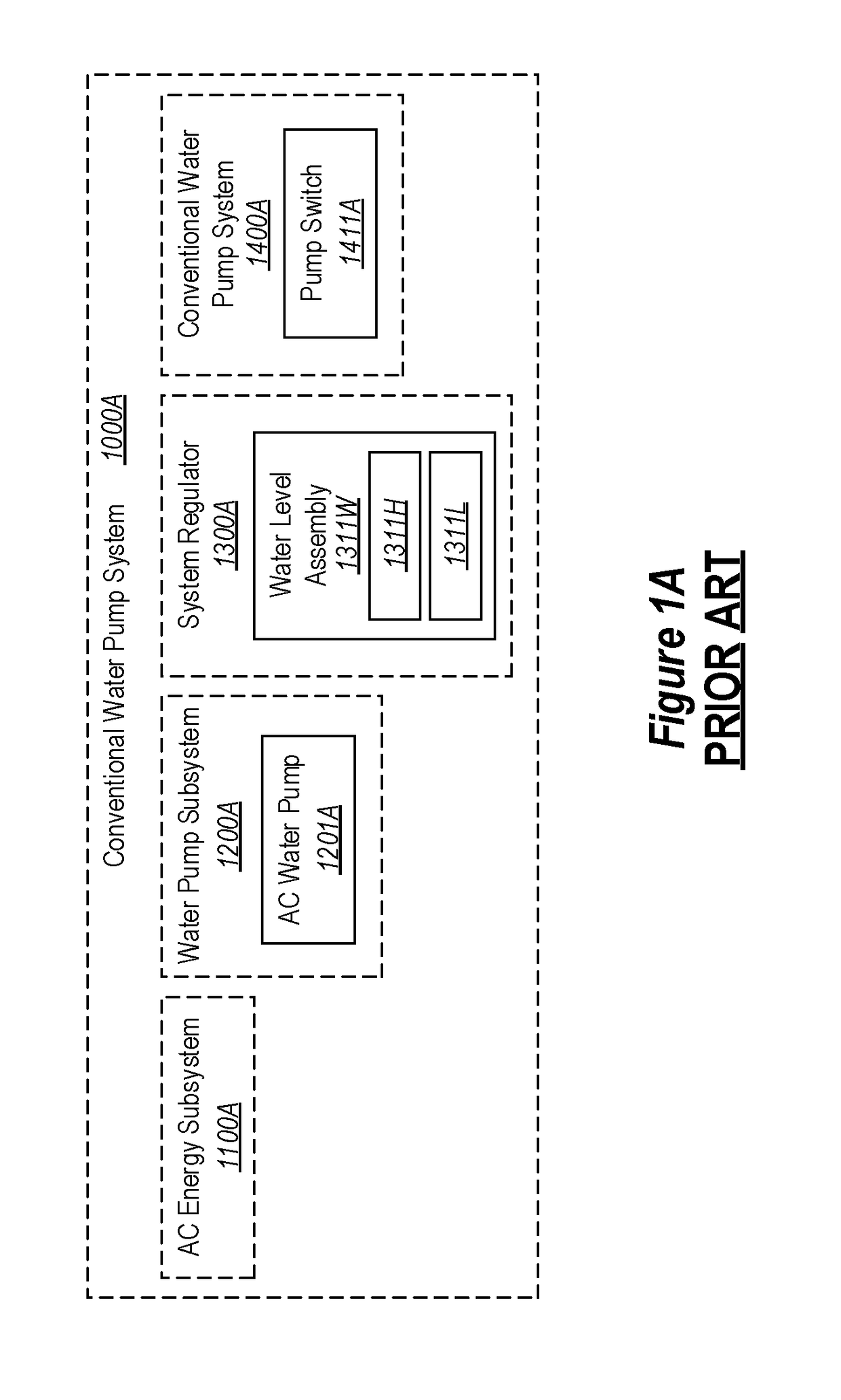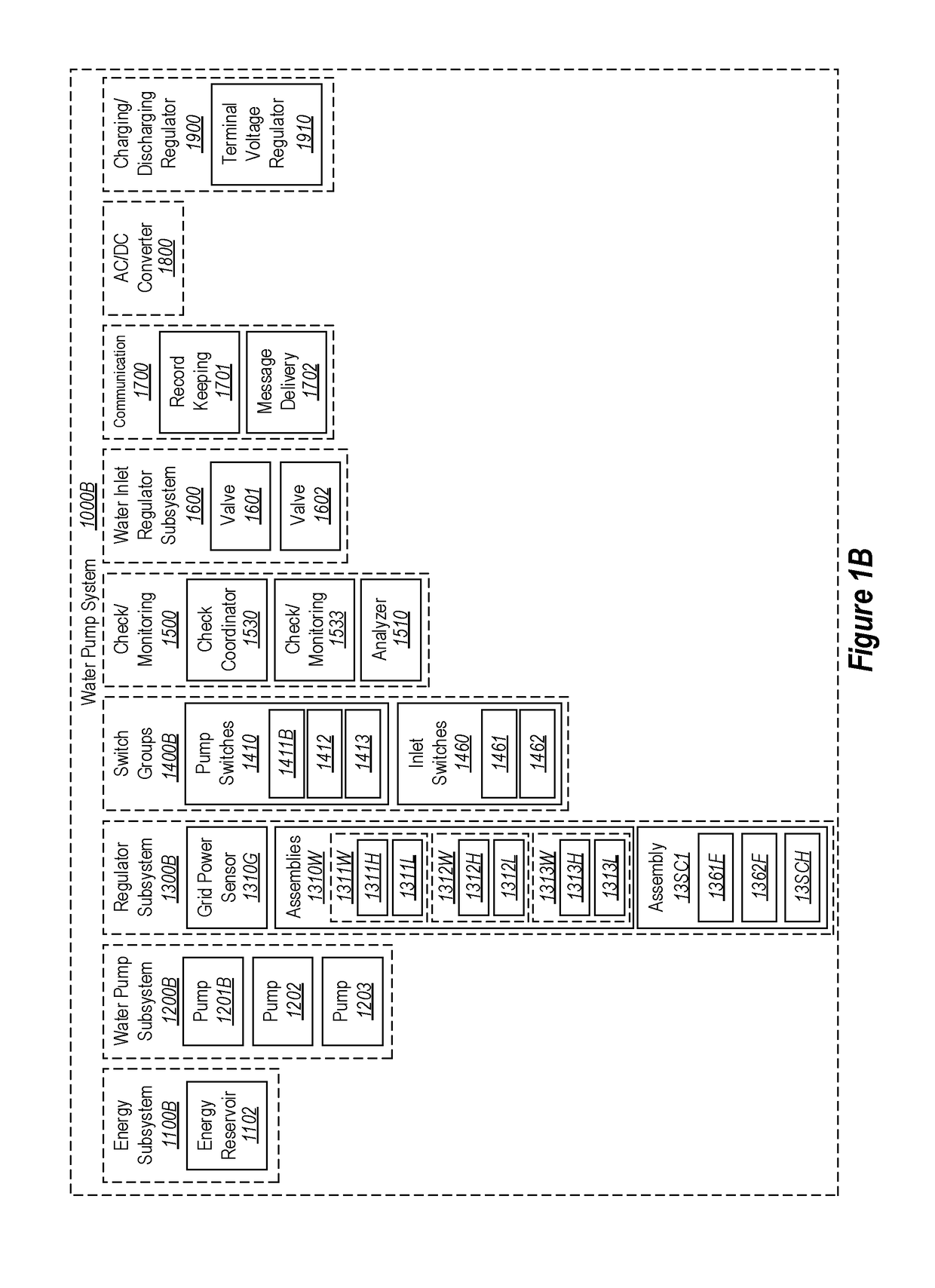Multi-pump system with system check
a multi-pump system and check technology, applied in the direction of pump control, positive displacement liquid engine, fluid engine, etc., can solve the problems of major water damage, unexpected pump failure is the akeley's heel of the conventional pump system, water damage, etc., to save electricity, shorten the motor's life, and increase the capacity
- Summary
- Abstract
- Description
- Claims
- Application Information
AI Technical Summary
Benefits of technology
Problems solved by technology
Method used
Image
Examples
Embodiment Construction
[0016]Section One: Conventional Pump Systems.
[0017]Statistically, when using the conventional pump system, the most frequent cause of the serious water damages is due to unexpected pump failures that lead to basement flooding. Unexpected pump failure is the Akeley's heel of the conventional pump system which operates using a single pump. The second most frequent cause of major water damage when using the conventional pump system is due to grid power outages. But use of the conventional pump system also has other potential concerns, in addition to water damage. For instance, there is a threat of high voltage electrocution when there is flooding.
[0018]FIG. 1A schematically illustrates a conventional pump system 1000A. In contrast, FIG. 1B schematically illustrates an embodiment of a pump system 1000B in accordance with the principles described herein. As depicted in FIG. 1A, a conventional pump system 1000A includes (1) a power supply subsystem (or “energy subsystem”) 1100A to supply ...
PUM
 Login to View More
Login to View More Abstract
Description
Claims
Application Information
 Login to View More
Login to View More - R&D
- Intellectual Property
- Life Sciences
- Materials
- Tech Scout
- Unparalleled Data Quality
- Higher Quality Content
- 60% Fewer Hallucinations
Browse by: Latest US Patents, China's latest patents, Technical Efficacy Thesaurus, Application Domain, Technology Topic, Popular Technical Reports.
© 2025 PatSnap. All rights reserved.Legal|Privacy policy|Modern Slavery Act Transparency Statement|Sitemap|About US| Contact US: help@patsnap.com



